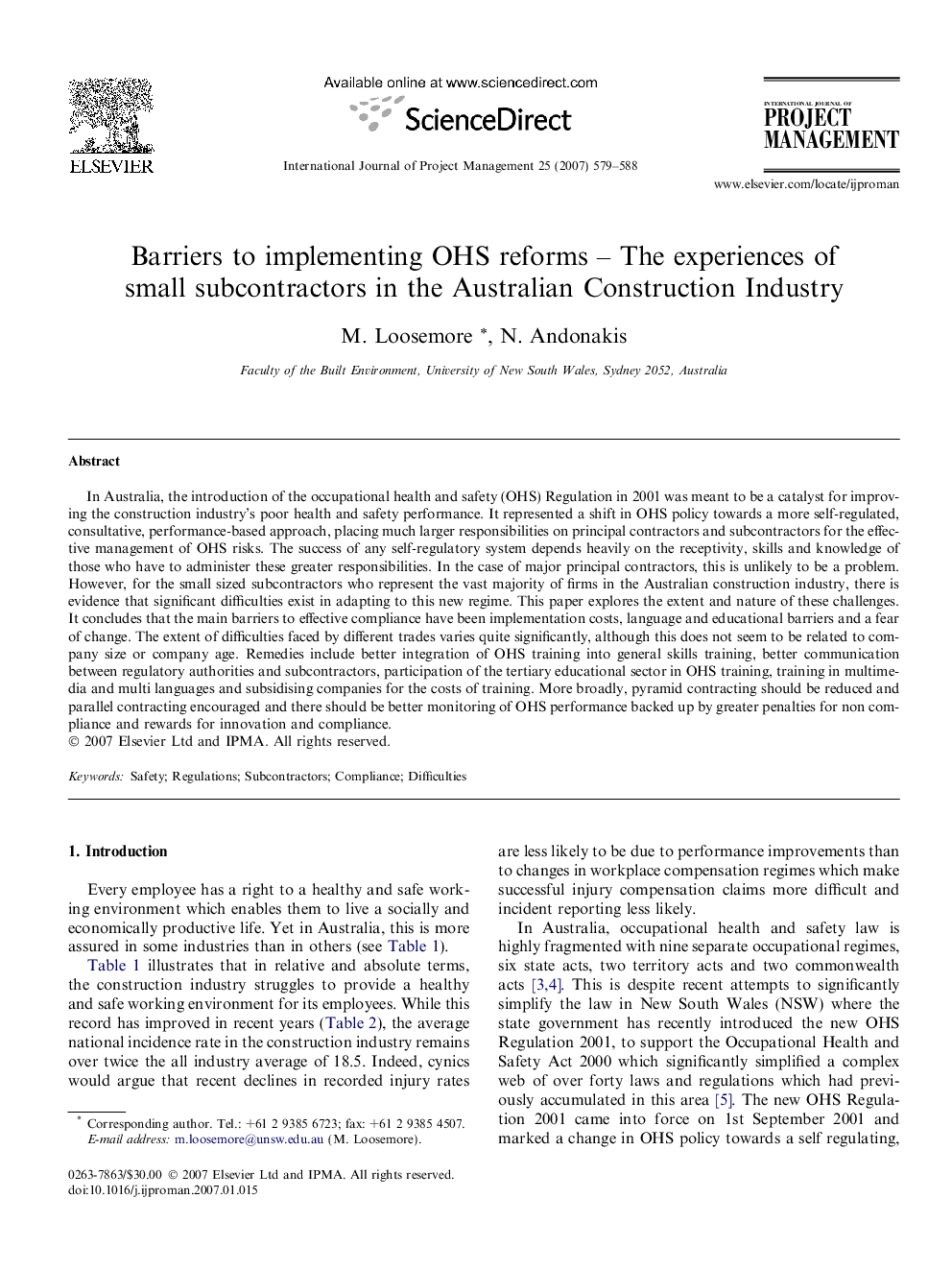| Article ID | Journal | Published Year | Pages | File Type |
|---|---|---|---|---|
| 277012 | International Journal of Project Management | 2007 | 10 Pages |
In Australia, the introduction of the occupational health and safety (OHS) Regulation in 2001 was meant to be a catalyst for improving the construction industry’s poor health and safety performance. It represented a shift in OHS policy towards a more self-regulated, consultative, performance-based approach, placing much larger responsibilities on principal contractors and subcontractors for the effective management of OHS risks. The success of any self-regulatory system depends heavily on the receptivity, skills and knowledge of those who have to administer these greater responsibilities. In the case of major principal contractors, this is unlikely to be a problem. However, for the small sized subcontractors who represent the vast majority of firms in the Australian construction industry, there is evidence that significant difficulties exist in adapting to this new regime. This paper explores the extent and nature of these challenges. It concludes that the main barriers to effective compliance have been implementation costs, language and educational barriers and a fear of change. The extent of difficulties faced by different trades varies quite significantly, although this does not seem to be related to company size or company age. Remedies include better integration of OHS training into general skills training, better communication between regulatory authorities and subcontractors, participation of the tertiary educational sector in OHS training, training in multimedia and multi languages and subsidising companies for the costs of training. More broadly, pyramid contracting should be reduced and parallel contracting encouraged and there should be better monitoring of OHS performance backed up by greater penalties for non compliance and rewards for innovation and compliance.
